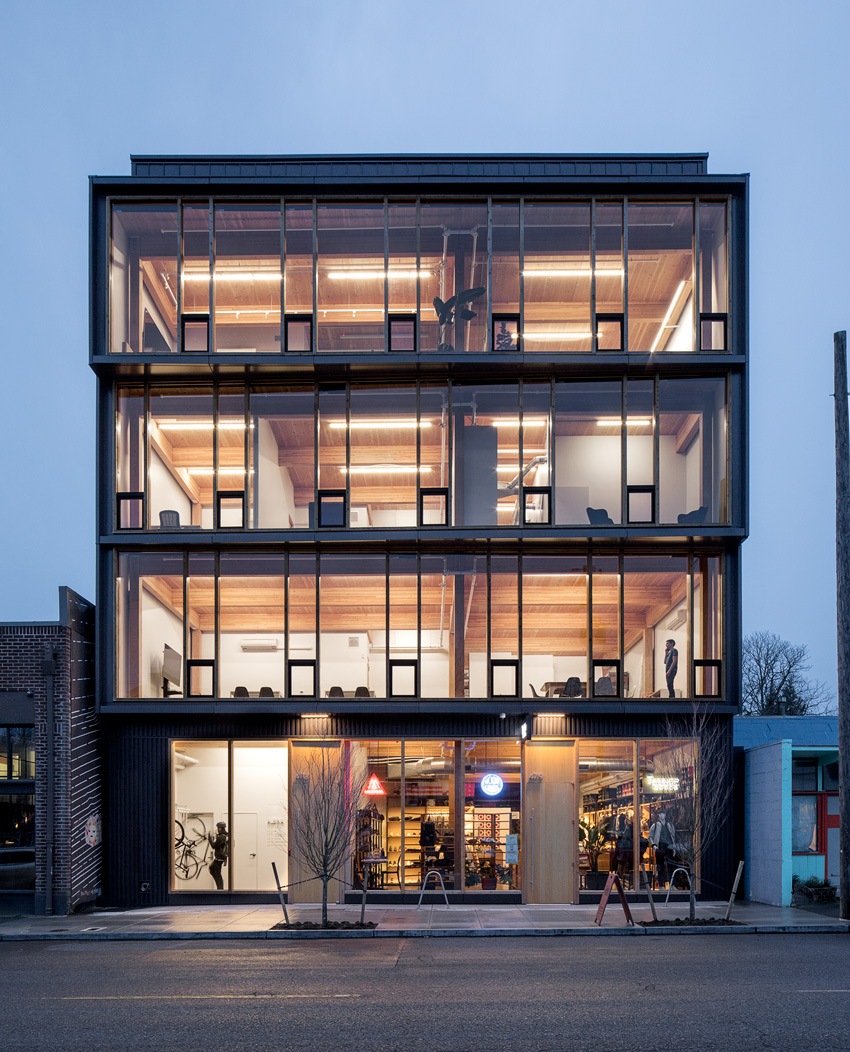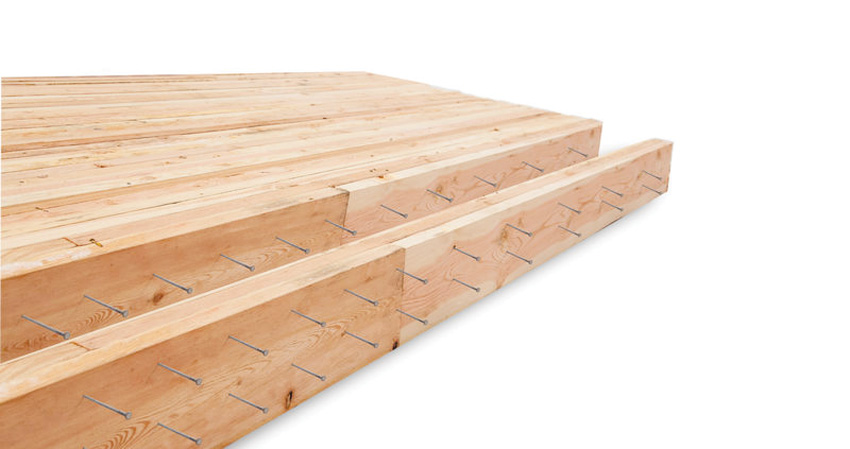Wood and Evolving Codes: The 2018 IBC and Emerging Wood Technologies
Learning Objectives:
- Discuss provisions in the International Building Code (IBC) intended to ensure that wood buildings provide an acceptable level of safety.
- Evaluate techniques that make it safe for designers to increase heights and areas of building projects beyond IBC base limits.
- Identify the advantages of wood-frame and mass timber structures during hazardous events.
- Explain how advances in wood products and building systems are influencing the evolution of building codes.
Credits:
This course is approved as a Structured Course
This course can be self-reported to the AANB, as per their CE Guidelines
Approved for structured learning
Approved for Core Learning
This course can be self-reported to the NLAA
Course may qualify for Learning Hours with NWTAA
Course eligible for OAA Learning Hours
This course is approved as a core course
This course can be self-reported for Learning Units to the Architectural Institute of British Columbia
Increasingly, designers, builders, and building owners are turning to one of our oldest building materials: wood. Valued for its versatility, low carbon footprint, and aesthetic qualities, not to mention its cost performance, wood has long been a preferred choice for constructing durable structures that are resilient in the face of hazardous conditions. However, in modern times, structural wood has been largely confined to residential and low-rise commercial construction, despite its proven structural performance and ability to endure seismic and wind events. Recent innovations and subsequent code changes are expanding the use of structural wood beyond these established sectors.

Photo: Jeremy Bitterman, courtesy of LEVER Architecture
Designers are taking advantage of innovative wood products that showcase the natural beauty of wood.
Using wood in nonresidential buildings is not a completely new idea, but rather a revival. Innovative new construction techniques are expanding the use of lumber; these techniques utilize engineered wood products such as cross-laminated timber (CLT), nail-laminated timber (NLT), dowel-laminated timber (DLT), and structural glued-laminated timber (glulam). These “mass timber” products have great structural capability and inherent fire resistance, and interest in mid- and even high-rise wood buildings that incorporate these technologies is growing rapidly in Canada and the United States. Testing and validation of these products, in addition to many new examples coming online, is driving increasing confidence from both the public and local code authorities. Recent code changes reflect the growing body of research that validates these systems for structural performance and for contribution to life safety during extreme events, such as fires, hurricanes, and earthquakes.
The Code Update Process
When the International Building Code (IBC) was introduced in 2000, it consolidated three regional model building codes into one uniform code that has since been adopted by most jurisdictions. It increased the possibilities for wood construction by (among other things) recognizing additional fire protection techniques, consolidating the maximum allowable areas and heights from the three legacy codes into one (thus increasing what’s allowable in some jurisdictions), and allowing the use of wood in a wider range of building types. In subsequent versions of the IBC, even more opportunities have been created where additional fire protection features are used. Even so, the pioneering nature of building design is such that there are always architects and engineers seeking to innovate, and it is common for project teams to request (and be granted) variances for designs not covered by the code that nonetheless meet its intent and provide accepted levels of safety. Given the code’s three-year amendment cycle, this performance pathway is necessary to keep pace with advancements in building systems, materials, and construction practices.
The 2018 IBC was released in September 2017 and certain states and local jurisdictions have adopted it; however, the code landscape is uneven, and many states and jurisdictions are following IBC 2015, 2012, or even older versions of the code. The 2018 IBC references newer versions of important standards. One of these is ANSI/AWC NDS-2018: National Design Specification for Wood Construction. Produced by the American Wood Council (AWC), this resource was first issued in 1944. Today, it includes requirements for design of a full range of wood products based on up-to-date research and testing, and it is used to guide design of wood structures around the world.
NDS 2018 itself references ASCE 7-16: Minimum Design Loads and Associated Criteria for Buildings and Other Structures. This important resource, published by the American Society of Civil Engineers (ASCE), describes the means for determining dead, live, soil, flood, tsunami, snow, rain, atmospheric ice, earthquake, and wind loads, and their combinations for general structural design. It is widely referenced by building codes.
While the IBC is updated on a three-year cycle, the ASCE 7 is typically on a six-year cycle. The NDS is updated at least every six years, but sometimes more often to address new load provisions developed by ASCE 7 or new products such as CLT.
Advocating for Change
Although the International Code Council (ICC) and the building industry in general have long recognized the benefits of wood as a building material, emerging technologies such as CLT are still new to many people, and until the 2015 IBC, they were not explicitly introduced into building codes.1
It’s important to understand that mass timber systems and technologies such as CLT have been fully tested and verified and are allowed under current codes. Fortunately, architects, engineers, developers, building owners, and others are championing CLT and other new uses of wood, including light frame, and sharing resources and research to support this burgeoning interest in mass timber building design, including the use of wood in taller buildings. The Think Wood Research Library, an online database that includes nearly 1,000 research documents, can help architects, engineers, and other industry professionals design and build safe, high-performing wood structures. The research contained in the database covers seismic, fire safety, and other performance aspects of wood members and systems. The library also includes reports and research papers on other design topics, including acoustics and vibrations, energy and environment, and building codes and cost.
Another specific resource for designers seeking to design code-compliant wood structures is the 2018 Code-Conforming Wood Design (CCWD). Produced in partnership with the ICC, the AWC developed this document to demonstrate that modern building codes allow large, multistory wood buildings in many common occupancy uses with nothing more than a basic understanding of key code provisions required. CCWD summarizes the most common requirements for wood construction in commercial buildings according to the 2015 IBC. The 2018 version of CCWD, based on the 2018 IBC, has been released and is available at “CCWD_Complete_2018.”
In this quickly evolving industry, a number of individuals and entities, including engineering firms, academic institutions, standards organizations such as the National Fire Protection Association (NFPA), and government research organizations such as the U.S. Forest Service Forest Products Laboratory, have been driving innovation with testing that demonstrates and improves upon the structural, seismic, wind, and fire safety performance of mass timber. These efforts have led to a great deal of new information in a short period of time, and these groups are committed to sharing this information in order to drive best practices in this emerging field.
To promote and facilitate code changes based on the building science of taller wood buildings, the ICC approved the creation of the Ad Hoc Committee on Tall Wood Buildings in 2016. This balanced group includes building officials, fire officials, architects, fire protection engineers, and industry experts. “Tall wood” is an industry term that refers to the use of wood products in buildings greater than six stories; hence, the committee was charged with investigating the feasibility of and taking action on developing code changes for tall mass timber buildings. Since its formation, the Committee on Tall Wood Buildings has reviewed extensive literature on tall wood buildings, including the results of domestic and international testing. The committee has proposed 14 code changes for the 2021 IBC cycle.2 (A summary of these proposed changes can be viewed at www.awc.org/tallmasstimber)

Image courtesy of Think Wood
Nail-laminated timber, which consists of dimension lumber stacked on edge and nailed together, is one of several engineered wood products being used in today’s buildings.

















